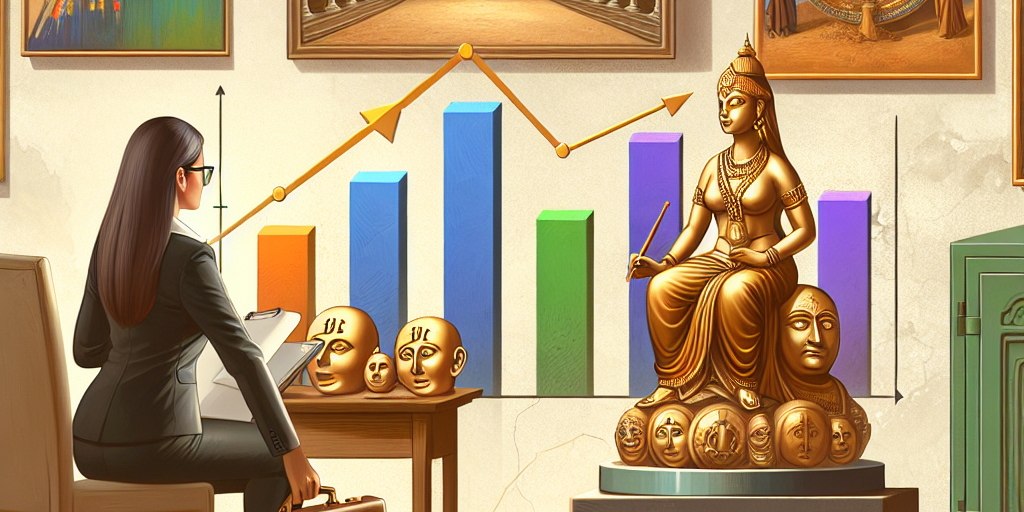In an ever-evolving financial landscape, savvy investors are continuously seeking novel avenues to diversify their portfolios and achieve robust returns. While the allure of traditional investments like stocks, bonds, and real estate remains strong, an often-overlooked realm is burgeoning with potential—artistic ventures. Investing in the arts, whether through fine art, music, theater, or digital creations, presents a unique fusion of cultural enrichment and financial opportunity. Here’s a closer look at how backing artistic ventures can be both a profitable and gratifying pursuit.
The Intrinsic Value of Art
Art possesses an intrinsic value that transcends monetary metrics. It is a physical manifestation of human creativity, emotion, and historical context. This intrinsic value can preserve—and often appreciate—over time, transforming a mere canvas of paint into a valuable asset. Art investments are less susceptible to market volatility, offering a hedge against economic downturns.
Diverse Avenues for Investment
Artistic ventures span a wide spectrum, providing myriad opportunities for investment:
-
Fine Art: Investing in original works by established and emerging artists is perhaps the most traditional way of entering the art market. The rising popularity of art fairs, galleries, and online marketplaces facilitates access to a global audience.
-
Music Rights: With the advent of streaming platforms, purchasing rights to music catalogs has become a lucrative investment. Royalties from popular songs have shown to provide steady income streams.
-
Theater Productions: Investing in Broadway and West End productions can yield significant returns, especially if the show becomes a hit. Performing arts funds, which pool capital from multiple investors, offer a way to mitigate risk.
-
Digital Art: The explosion of NFTs (Non-Fungible Tokens) has opened up a new frontier for art investment. Digital collectibles and blockchain technology enable verifiable ownership and have seen astronomical sales figures.
- Film and Media: Investing in film production can be risky, but successful projects can yield substantial returns. Crowdfunding platforms have democratized access to film investments, allowing smaller investors to participate.
Financial Returns: Tangible and Intangible
One of the key attractions of investing in art is the potential for substantial financial returns. Art values have demonstrated long-term appreciation, with certain works achieving exponential gains. Consider the Leonardo da Vinci painting "Salvator Mundi," which sold for a staggering $450 million in 2017, a testament to the extraordinary valuation of historical masterpieces.
However, the financial benefits of artistic investments are not limited to large-scale works. The democratization of the art market has opened avenues for investing in emerging artists, whose works might significantly appreciate as they gain recognition.
Aside from financial gain, investing in the arts offers intangible benefits. Art can enhance one’s living or working environment, provide personal fulfillment, and contribute to cultural legacy. Moreover, supporting the arts can foster creativity and innovation within society, offering a sense of purpose beyond mere profit.
Navigating the Market
Investing in the arts requires a well-considered strategy. Key steps include:
-
Conducting Research: Understand the market trends, the history of artists, and the provenance of works. Platforms like Artnet and Sotheby’s provide valuable market insights.
-
Consulting Experts: Art advisors and financial planners with expertise in art investments can guide you through the complexities of the market and help build a balanced portfolio.
-
Diversification: Similar to any investment, diversification is crucial. Spread investments across different types of art, artists, and markets to mitigate risk.
- Assessing Authenticity: Authenticity is paramount. Ensure the provenance of works and consider certificates of authenticity to safeguard the investment.
The Future of Art Investment
The digital age is transforming the art investment landscape. Blockchain technology, augmented reality, and artificial intelligence are reshaping how art is created, traded, and verified. Virtual galleries and online auctions are democratizing access, allowing a broader audience to participate in the art market.
As the global economy becomes increasingly interconnected, the appetite for art as an investment is poised to grow. Institutional investors are recognizing the value of art assets, and museums and corporations are adding art to their holdings.
Conclusion
The art of investment, both literal and figurative, is an endeavor that marries the pursuit of financial gain with cultural richness. By backing artistic ventures, investors tap into a market that is resilient, diverse, and imbued with meaning. Whether you’re acquiring a timeless painting, supporting a groundbreaking film, or embracing digital innovation, the potential rewards extend far beyond monetary appreciation. In a world where the blending of culture and capital is becoming ever more significant, investing in the arts represents not just a smart financial move, but a profound contribution to the tapestry of human creativity.







